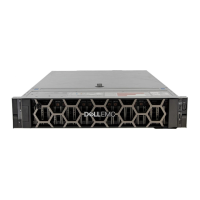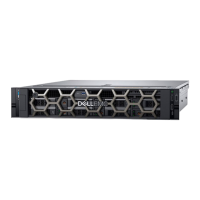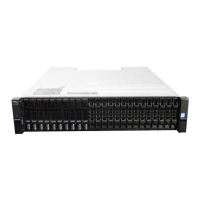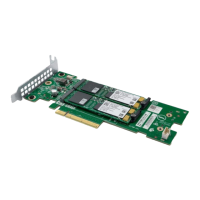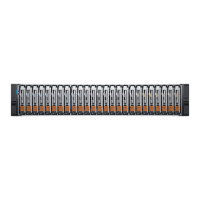Cache status behavior
If the LED is blinking evenly, a cache flush is in progress. When a controller module loses power and write cache is dirty (contains data that
has not been written to disk), the supercapacitor pack provides backup power to flush (copy) data from write cache to CompactFlash
memory. When cache flush is complete, the cache transitions into self-refresh mode.
If the LED is blinking momentarily slowly, the cache is in a self-refresh mode. In self-refresh mode, if primary power is restored before the
backup power is depleted (3–30 minutes, depending on various factors), the system boots, finds data preserved in cache, and writes it to
disk. This means the system can be operational within 30 seconds, and before the typical host I/O time-out of 60 seconds, at which point
system failure would cause host-application failure. If primary power is restored after the backup power is depleted, the system boots and
restores data to cache from CompactFlash, which can take about 90 seconds. The cache flush and self-refresh mechanism is an
important data protection feature; essentially four copies of user data are preserved: one in controller cache and one in CompactFlash of
each controller. The Cache Status LED illuminates solid green during the boot-up process. This behavior indicates the cache is logging all
Power On Self Tests (POSTs), which will be flushed to the CompactFlash the next time the controller shuts down.
NOTE:
If the Cache Status LED illuminates solid green—and you wish to shut down the controller—do so from the user
interface, so unwritten data can be flushed to CompactFlash.
CompactFlash
During a power loss or controller failure, data stored in cache is saved off to non-volatile memory (CompactFlash). The data is restored to
cache, and then written to disk after the issue is corrected. To protect against writing incomplete data to disk, the image stored on the
CompactFlash is verified before committing to disk. The CompactFlash memory card is located at the midplane-facing end of the
controller module. Do not remove the card; it is used for cache recovery only.
Figure 34. CompactFlash memory card
1.
CompactFlash memory card 2. Controller module viewed from back
In single-controller module configurations, if the controller module has failed or does not start, and the Cache Status LED is on or blinking,
the CompactFlash needs to be transported to a replacement controller to recover data not flushed to the disk.
CAUTION:
For single-controller module configuration only, to preserve the existing data stored in the CompactFlash,
you must transport the CompactFlash from the failed controller module to the replacement controller module. This
procedure is outlined in the
Dell EMC PowerVault ME4 Series Storage System Owner's Manual
within the procedure for
replacing a controller module. Failure to use this procedure will result in the loss of data stored in the cache module. The
CompactFlash must stay with the same enclosure. If the CompactFlash is used/installed in a different enclosure, data
loss/data corruption will occur.
NOTE: In dual-controller module configurations featuring one healthy partner controller module, there is no need to
transport the CompactFlash from the failed controller module to the to the replacement controller module. The cache is
duplicated between the controller modules, provided that volume cache is set to standard on all volumes in the pool
owned by the failed controller module.
26 Storage system hardware

